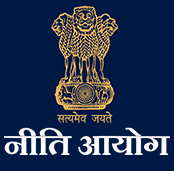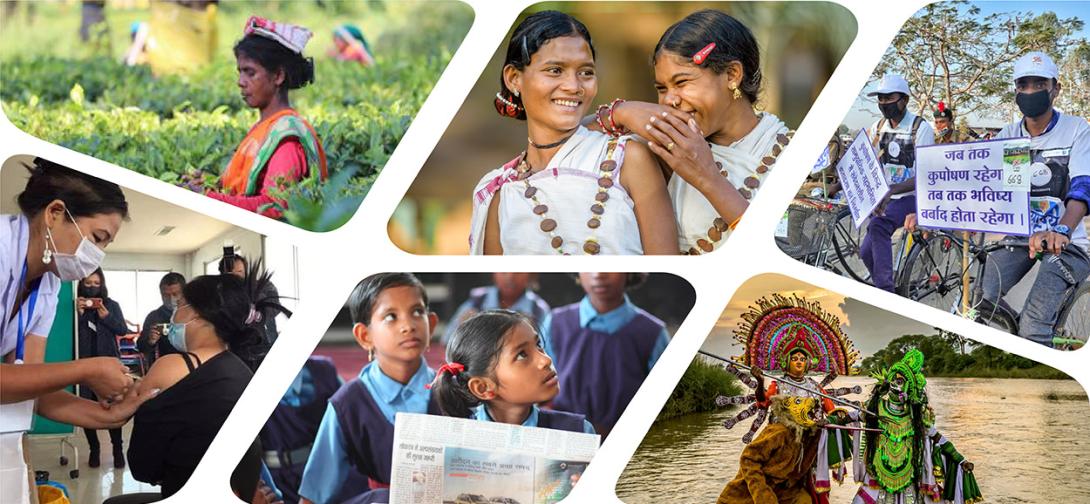Bhadradri Kothagudem Is All About ‘Inclusive Development
The recently formed district of Bhadradri Kothagudem is home to one of the oldest temples in India. Situated on the banks of river Godavari, Bhadrachlam is not only a holy pilgrimage site but also a testimony of India’s prosperous ancient civilization and rich heritage. With this background, it was more thrilling to understand the current efforts being taken for the development of the district.
My visit to Bhadradri Kothagudem for the Aspirational Districts Programme gave me a chance to closely understand the existing gap between Bharat and India and helped gain insights about the specific developmental challenges of a tribal district.
During my discussion with the various district officials I realized that few issues which are faced by the district while monitoring various programs are similar to those faced by DMEO (Development, Monitoring and Evaluation Office) at the central level. These included inadequate availability as well as authenticity of data reported. However apart from monitoring related issues, the district also faces a different set of challenges when it comes to achieving development outcomes. These vary from the severe Left wing activities to facing influx of tribal migrant population from the neighbouring states, like the Muria Gonds from Chhattisgarh.
This tribal community has been migrating in large numbers from across the Chhattisgarh border into the State for the past 2 decades. And as they lack legal recognition in the state, they can’t directly be a beneficiary of the public delivery system. This further hinders the provision of basic facilities such as drinking water, access to roads and electricity. Infact most of the Murias also remain bereft of a sustained source of regular income despite being issuing job cards under NREGA. This has actually posed a challenge for the overall development of the district.
People residing in these habitations are affected by acute anaemia and malnutrition of the third degree, which especially affects the women and children. However to combat this, the administration has ensured that the health workers are trained- one per hamlet, provided with bike-ambulance and essential medical/immunization/HB check- kits. Extensive efforts of providing immunization and vaccination to infants in these habitations have been undertaken and have shown positive results.
The consumption of contaminated water had also led to spreading of various diseases in these habitations. But currently, to ensure that safe drinking water, Water Rollers are being provided to them. These rollers have ensure adequate access to water for a considerable amount of time and also reduces efforts to acquire water regularly from distant places. It has immensely helped to improve the quality of life of the people living in these habitations.
In fact when it comes to drinking water, the district has successfully implemented ‘Mission Bhagirtha’ (a state run initiative to provide piped drinking water to every household). This has drinking water in most of the households in the distrct and bore well in corresponding tribal habitations. At a community level, about 1 lakh soak pits are also being arranged for 1 lakh rural households. This will not only help in assimilating water at one place but will also prevent water stagnation and replenish the ground water. This will improve the overall availability of clean and safe drinking water for the people and help in the overall development of the district.
Talking about the education sector in the district, it was observed that it faces many challenges. The biggest of them being inadequate number of teachers in the schools. Even the ones already working in the district may be in need of additional training to improve the learning outcomes of the students in the district. In a few cases the ratio of toilets per student is not maintained. This may contribute to the drop out rate of the students, which is already a little on the higher side. It was also highlighted that even though the district is open defecation free, efforts should be made to ensure the adequate quantity and minimum quality and of the toilets in educational institution.
Special efforts have been undertaken by Integrated Tribal Development Authority in the district to improve the skilling scenario in the district. Youth training centres have been established to impart skills in logistics and retail. They have established residential trainings centres which improved the participation of the students from the neighbouring villages and helped in the retention of the students. This had helped provide employment to many students from the district and has helped motivate more students to participate in the skilling programs.
Having said that, the district has also taken initiatives to help improve ease of living in the district and bring about more transparency in governance. They have taken a lead in simplifying the grievance redressal process by providing the Nivedhana app. The app helps people to register their grievances directly with the concerned departmental officers and has pre-listed only those grievances that can be solved at mandal/division/district level. This initiative has helped people in the distant blocks to register their grievances comfortably and improved the ease of living in the district.
During the visit, I was totally mesmerised by the picturesque beauty that the district has been blessed with and I really hoped that idea of developing it as a tourist hub would certainly be explored further. This was also mentioned by the District Collector that by creating new tribal home stays and simultaneously maintaining the pre-existing sites like sacred temples, waterfalls, water reservoirs and trekking trails, the district has the potential of becoming one of the top get-away destinations in India. This will also help generate employment opportunities for the local population and contribute to the socio-economic development of the tribal population residing in the area.
Overall, this visit to Bhadradri Kothagudem has helped me appreciate the immense efforts required for the development of the tribal pockets in the country and how sometimes even the simplest of interventions to provide improved basic amenities or health services can increase their ease of living to a great extent.
*Ishita Kandra is a Young Professional, NITI Aayog. Views expressed are personal.
 National Portal Of India
National Portal Of India 







